Are you keeping up with changing Facebook ad trends? Wondering which Facebook ad placements you should focus on?
To explore what marketers need to know about the latest Facebook ads trends, I interview Rick Mulready on the Social Media Marketing Podcast.
Rick, a Facebook ads expert, is the host of The Art of Online Business podcast. His course, Fundamentals, focuses on Facebook and Instagram ads.
Rick explores the three biggest trends Facebook advertisers need to be aware of and shares how marketers can make the most of these trends to produce successful Facebook campaigns.
Listen to the Podcast Now
This article is sourced from the Social Media Marketing Podcast, a top marketing podcast. Listen or subscribe below.
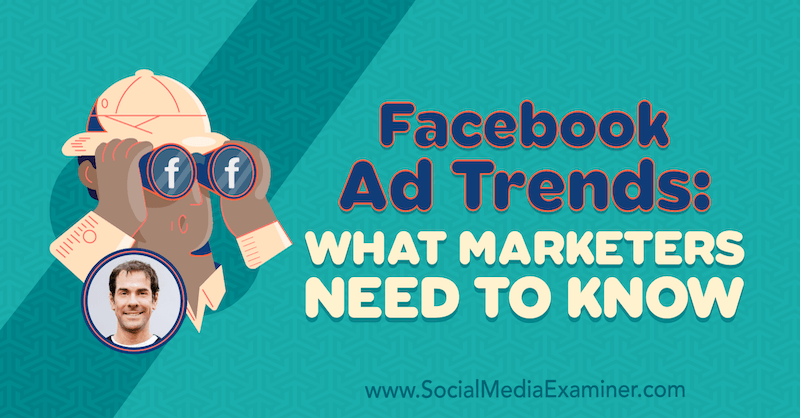
Rising Facebook Ad Costs
Ad costs on Facebook have been rising for a few years now because of a number of key factors.
Supply and Demand
There are currently more than 6 million advertisers on Facebook—a dramatic increase from 4 million advertisers in 2016. Supply and demand means that more advertisers = greater demand taking up the limited supply, which has driven costs up.
Seasonal Traffic
We're recording this in Q4 2019 and more advertisers are jumping on the platforms to advertise their products and special sales for the holiday season. This is when a lot of marketers with seasonal businesses spend their money, which drives costs up every year for those of us who advertise year-round. But it's the nature of the business; if we want to play in this sandbox, we have to be ready to pay for it.
Politics
Next year, 2020, is an election year. Campaigns have already started in the latter half of 2019 so there's been more advertising. In every city, state, and country—or at least in America—there are people in all political aspects who are going to be advertising. Candidates are raising money and the platform where they're probably going to spend it first is Facebook because they can do high targeting.
Costs aren't necessarily higher across the board and plenty of people are still getting great results. But if you're seeing higher costs than normal for your ads, politics is one reason for it.
It's safe to assume that those of us who run ads year-round may see a drop in cost in January because the demand won't be as strong. Then we'll see it ramp back up as we get into the full swing of the election cycle, which will probably be strongest in the fall leading up to the November elections.
Ad Quality
Another reason for poor ad performance could be that, quite frankly, your ads just aren't very good.
Get World-Class Marketing Training — All Year Long!
Are you facing doubt, uncertainty, or overwhelm? The Social Media Marketing Society can help.
Each month, you’ll receive training from trusted marketing experts, covering everything from AI to organic social marketing. When you join, you’ll also get immediate access to:
- A library of 100+ marketing trainings
- A community of like-minded marketers
- Monthly online community meetups
- Relevant news and trends updates
The algorithm rewards advertisers that provide good user experiences because that's what Facebook and Instagram always want to do. The platforms want to provide great user experiences because advertisers aren't their customers, users are their customers. They know that if the user numbers go down, advertising numbers will go down as well, so they want to protect the user experience at all costs.
A big part of that experience is that the platforms want advertisers approaching things from a positive standpoint, not a negative one. That's why there are so many ad policies: the algorithm wants to show relevant ads to the right people. The more you're able to leverage Facebook's targeting capabilities with your messaging and creative, the better your ads are, and the more the algorithm will reward you. More delivery equals lower costs.
Lifetime Value
If we can somehow calculate the true value of a customer, not just the acquisition cost of the customer, it might allow us to ride out some of these high-cost storms.
Anytime we're running ads, it's a numbers game. If your lead cost doubles from $4 to $8, but you know the value of that customer is $50, you're not really sweating it because you know what those numbers are. It's when people don't know what those numbers are in their business that things get really scary. It also lets you answer the question, “How much should I be spending on my ads?” This is the million-dollar question.
The real answer to that comes when you know what your cost is to acquire a customer, or what your lifetime customer value is.
Think Mobile First With Facebook Ads
This really isn't a trend, per se, but it's becoming more important. You've got to think mobile first when creating your ads.
Mark Zuckerberg recently stated that the overall percentage of Facebook ad revenue from mobile was more than 90%, which is huge. People are accessing Facebook and Instagram on their mobile devices in unprecedented numbers. So, from an advertising perspective, we need to create our ads with mobile in mind first.
Ad Image
The image has always been important in ads but it's never been more important than it is right now, especially on mobile devices. We always talk about making sure that our ad is a “scroll-stopper.” We want to get the attention of people scrolling through their news feed or Instagram so they stop, look at, and read our ad.
A few months ago, Facebook announced that they were standardizing image sizes across all ad placements so we don't have to create different variations of the image. A 5:4 ratio (vertical; slightly more tall than wide) is the standard, but square also works really well on mobile devices, whether it's an image or a video.
Ad Copy Length
When Facebook standardized those image sizes, they expanded the image a little bit. This in turn has cut the number of lines of copy above the image on mobile devices from around seven lines before you have to click that “…see more” button to more like three. That means you'd better catch people's attention with those first one or two lines of ad copy; you've got to front-load your message.
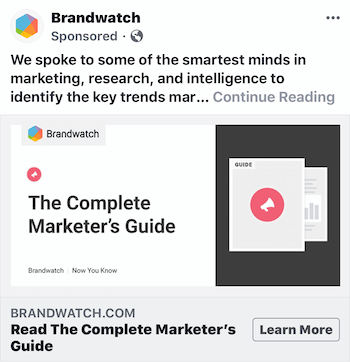
You've got to get it in the first line or two tops to get them to either take action on your ad right then and there or at least click the “…see more” link so that they can skim through more of the copy and then make the decision on taking that action from there.
In Ads Manager, you can preview each of the ads that you're doing. If you select to run in all placements, for instance, they've made it so much easier to look at previews of your ad on Instagram's feed, Facebook's mobile news feed, Instagram Stories, or other placements. If what you're previewing isn't quite what you want it to be, you can change things around.
You can customize what the ad is going to look like per placement, which is really important. You can even make a version of it just for mobile versus desktop. On desktop, they also have the “…see more,” but you get more lines before it than you do in the mobile experience.
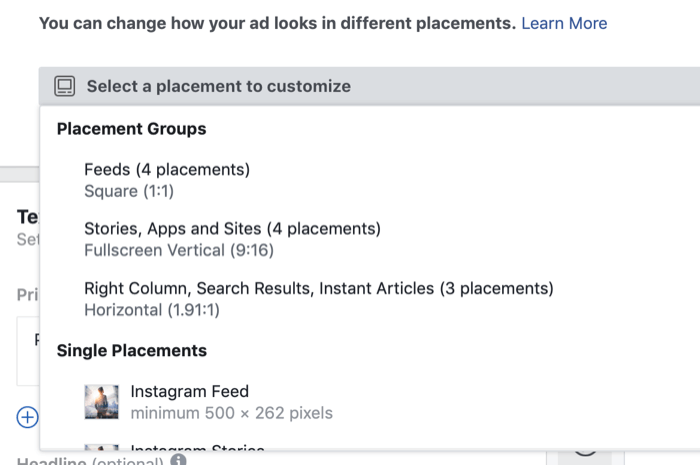
You could choose to craft your copy almost like a tweet and not put a lot in there so you never even trigger the “…see more” overflow prompt, or you could leverage a little bit more of that real estate to tell more of a story to entice them to click.
Generally, longer copy tends to work better when you're asking people to make a bigger commitment such as selling something versus giving something away, or if you want somebody to register for an hour-long webinar. It's both time and financial. But there are also plenty of short-form ads for these types of things that work extremely well. You have to test what works best for you.
Text Placement
There's a headline and a subhead below the image on desktop ad placements, but not on mobile. They call it the Newsfeed Description, which is for desktop only. You have your headline and then you can put a couple of lines of text below the headline that will show up only for the desktop news feed experience.
Where it gets really interesting on mobile ads is if you have a call-to-action (CTA) button—like Learn More—it may cut off part of your headline. Make sure to preview what your ad is going to look like so you can assess exactly where that headline might be getting cut off. Are they seeing enough of it?
For the most part, ads perform better when there's a CTA button. You can also test excluding the CTA button so the ad blends in better with the feed and just looks like content; those types of ads can work really well, too. But for the most part, CTA buttons really increase ad performance.
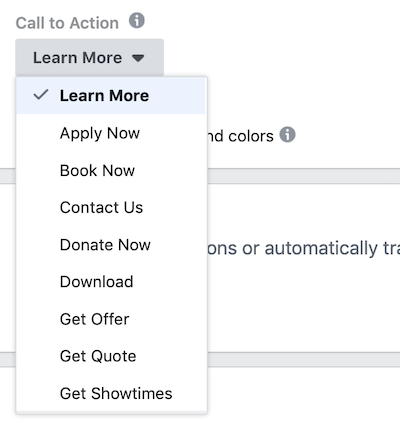
Instagram First
When you choose All Placements, it allows Facebook to deliver your ads across all of its family and placements, including Instagram, Facebook news feed, Instant Articles, and other options. Rick has observed a recent trend toward Instagram getting a bigger share of that ad delivery as Instagram has become more popular.
If you're using All Placements, look at the breakdown of placement delivery in your Ads Manager and check out where your ads are being delivered. It even breaks down Instagram Stories versus feed. Mark Zuckerberg has said there's excess inventory in Stories and that's why it's discounted, so check to see how much is going into Stories because that's a very different ad unit.
Video
Instagram Stories ads are really where it's at. There's so much supply there, and advertisers are still very new to that placement so costs are low. Rick tends to see his best performance from Instagram Stories ads with both videos and standard images.
Ads show up in between stories. A standard Instagram Stories ad is 15 seconds, but you can do it as a carousel ad as well, which can be up to three panels and 45 seconds long. Your 45-second video can be cut into 15-second videos, which Facebook will do, or you can get creative and do different panels where one builds off of the other. But if you want to do just one video or if the image is going to stay up there, you can do it for 15 seconds.
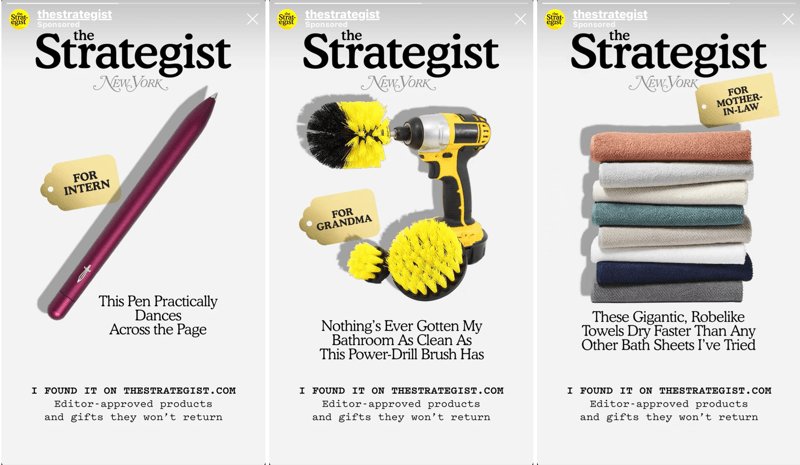
When you run an Instagram Stories ad, you don't need to have 10,000 followers to get that swipe-up functionality because you're paying for it as an ad. You're going to get the swipe-up feature because that's what the CTA is. You've got to tell them to swipe up—they won't think to do it because it's not like clicking on a link.
Use Video in Your Facebook Ads
The overall importance of using video on a platform like Facebook or Instagram isn't really new but it's only increasing. To illustrate, they've made Facebook stories front and center on your mobile device. There's also been talk about how in the not-so-distant future, Facebook is going to become even more video-oriented.
We should be doing video to leverage how the platform wants users consuming content. The amount of video that's being consumed on platforms like Facebook and Instagram on a daily basis is staggering. As advertisers, we want to take advantage of how people are consuming content. We should be creating video ads for whatever it is that we're marketing—and keeping mobile first in mind when we're doing it.
Video Length
Test videos as short as 15 seconds and up to several minutes long. All lengths can do really well; it varies based on what you're offering and what you're trying to achieve with the video.

Discover Proven Marketing Strategies and Tips
Want to go even deeper with your marketing? Check out the Social Media Marketing Podcast! Publishing weekly since 2012, the Social Media Marketing Podcast helps you navigate the constantly changing marketing jungle, with expert interviews from marketing pros.
But don’t let the name fool you. This show is about a lot more than just social media marketing. With over 600 episodes and millions of downloads each year, this show has been a trusted source for marketers for well over a decade.
You can do an Instagram Stories ad and then run the same ad on Facebook Stories. On the Instagram feed, video ads used to be limited to 60 seconds just like organic feed videos, but they've recently increased that length for ads to 120 seconds.
Video Captions
Video ads often start off muted so you need to create video that captures people's attention with the sound off. If you're talking in the video or there's a voiceover, you definitely want to add captions so somebody watching with the sound off will still know what's going on. In addition to that, you want to include motion, producing an eye-catching, visually interesting video.
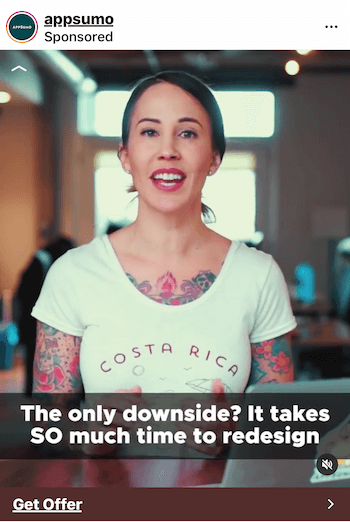
This doesn't mean you have to hire a big production company. Grab your phone, do something that aligns with yourself and your brand or your business, and just create something that you feel will add value and catch people's attention.
Text in Video
The rule for still images to feature no more than 20% text in ads also applies to animated text in videos. You can take a still image and add animated text to make it stand out in the feed, but it will still hurt you if the text size is taking up more than 20% of the image.
At the time of this recording, Facebook has admittedly been really wonky on assessing and reporting this. Facebook is telling people they have more than 20% text when they clearly don't; they're still approving the ads but it's been generally weird. Overall, if you're doing some sort of animation and the size of the text is still taking up a large piece of the real estate in the image, you'll likely have a problem whether it's animated or not.
Video Quality
You still want quality videos—but iPhones these days have amazing cameras. You ultimately want to create the kinds of videos that people are used to seeing in their feeds organically.
Nine times out of 10, people are just grabbing their phones and creating videos. As we get into 2020, we're leaning more toward doing a little bit extra just to stand out. But many of the best-performing video ads Rick has made in the past have just been him walking down the sidewalk with a coffee in his hand, speaking to the camera.
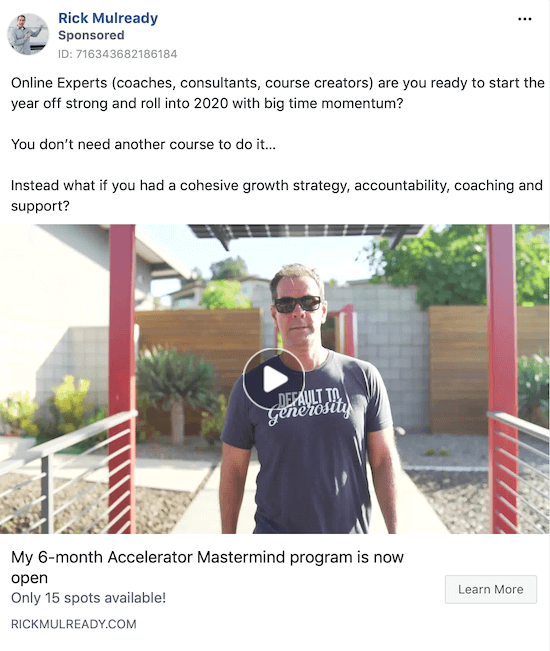
Live Video
Turning a live video into an ad remains very effective. Live videos are often longer, but again, you can test out different lengths. Whether you're doing a quick live with some sort of tip or update or you're teaching for 30 minutes, it all comes down to the goal of the video. What are you trying to achieve and why are you doing it? Who are you talking to? And what are you marketing? That longer video might be a good remarketing video to somebody who has watched one of your other videos.
Video Engagement Custom Audiences
One amazing feature is that we can create an engagement audience of people who are watching specific percentages of our video. If we have a 2-minute video and someone's watching 75% of that, it's a very engaged person. We can build custom audiences of those people who are watching a certain percentage of our videos and then we can create lookalike audiences from those audiences.
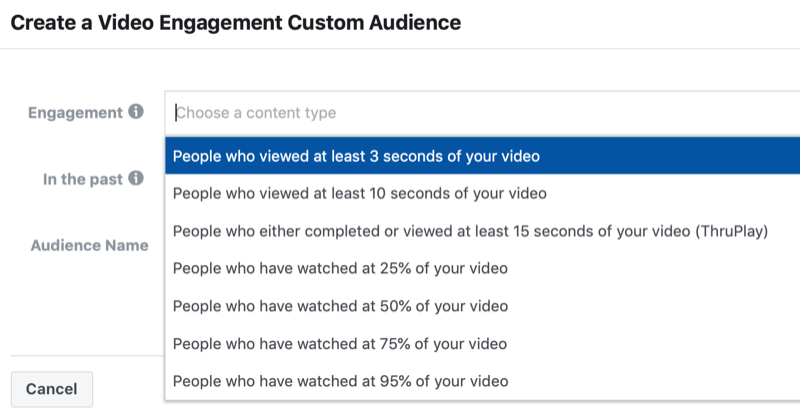
Facebook Campaign Budget Optimization
Campaign Budget Optimization (CBO) is nothing new. It was talked about in 2019 as if it were a new feature that Facebook had rolled out, when in fact it's been around for a while. People are just talking more about it because Facebook has stated that it's now going to become the default way in which we set our ad budgets for campaigns. People panicked because they hadn't been using it yet, and thus didn't understand it.
Budgets have traditionally been determined at the ad set level. If you're doing a campaign with a Conversions objective and you have five different ad sets for five different targeting groups, and you want to spend $100 per day, what you'd normally do is assign each ad set a budget—in this case, maybe $20 per day if you want to spend $100. So five ad sets, $20 per day, for $100. That's how everyone's done it for a long time.
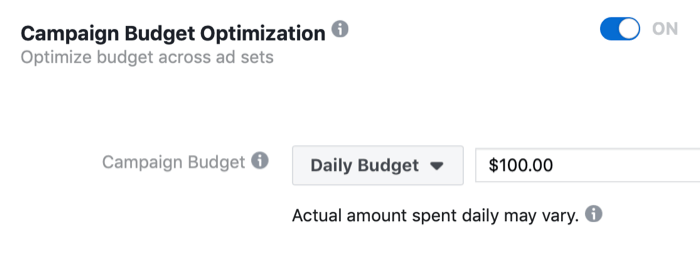
Once your campaign runs for 3–5 days, you'd go in and start to optimize. “Oh, this ad set is performing really well, this one isn't performing at all. I'm going to stop this ad set. I'm going to move some budget around to the ones that are performing well and manually do all that.”
With CBO, we're now setting the budget at the campaign level, and Facebook's algorithm automatically optimizes that ad spend and allocates it based on which ad sets and ads are performing best.
Ideally, if the AI is doing its job, it should be easier for those of us who manage ads. But Rick says it's not quite there yet; he's been testing it since early 2019 and it's been a mixed bag. He's heard from some people who are getting great results from it, where CBO is beating their manual optimizations. Others have had a different experience.
In September, Facebook changed CBO to become the default way to set up campaigns for anyone who's already been using it. For those who haven't been using CBO all along, that transition has been pushed out until February 2020. That's going to be a big shift for a lot of people, especially those who haven't been playing around with it and testing it.
Facebook will still allow you to set a budget at the ad set level even when you're using CBO.
To go back to the example above, if you want to spend $100 per day and you have five ad sets, you can set your campaign budget at $100 but you can also decide for that ad set, you want a minimum spend of $15. So you can force the algorithm a little bit, instead of fully allowing the algorithm to fully optimize for you. This is where it's going to take a lot of playing around, a lot of patience, and a lot of testing once this really rolls out to find what's working best for you.
The real question here is, do we trust Facebook's ad algorithm to do the job that humans used to do? If it does more and more as they force everyone to move over to it, the AI might get better at doing this for us. It has definitely improved already. When CBO first came out in 2017, Rick tested it right out of the gate and it was terrible. But as time went on and they put resources behind it, the algorithm got smarter and results started to improve.
Placement Optimization
When you choose All Placements on Facebook and Instagram, the idea is that the algorithm will find your prospect customer best lead, where the results are going to happen, and when.
Maybe someone's going to be on Instagram news feed in the morning, then in the afternoon they're going to be on their Facebook news feed, and in the evening they're going to be looking at Stories. The algorithm is designed to mix that up and find where your users and customers are, depending on the platform and how they're using the different placements.
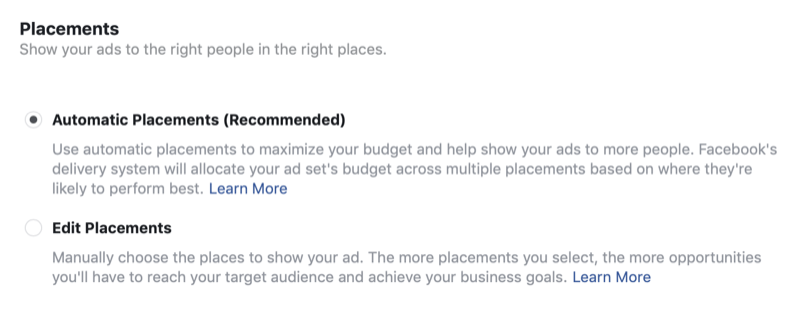
Rick says it's been doing a pretty good job with that and recommends going with All Placements for the most part. But it's still important to check out all of your different ad type previews when you choose All Placements to make sure that your ad looks good on mobile first, and that it works for Instagram Stories, Facebook, mobile news feed, and other placements.
Content Optimization
Facebook's AI is getting to the point where you can just give it a bunch of headlines and it's going to pick the winner. There'll be a day where we're just going to say, “Here are all my assets, Facebook; go spend my money.” We're closer to that than people think, which a good thing.
You can still absolutely test multiple versions of your headlines, ad copy, and images; create different variations; and see which ones perform best. They've made a lot of developments there, too. Eventually, the AI is going to get so good that it's going to come up with variations for you. And third-party AI tools already out there are trying to do that.
Unfortunately, some people who have careers as Facebook ad consultants may be out of work soon because that will all be fully automated.
Discovery of the Week
We've found the calendar and productivity app to rule them all. It's called Woven and this is the Holy Grail; it ticks all the boxes.
You can send a link for people to schedule time that you've pre-determined you're available. You can also send group scheduling polls, where people can check the times that they're available and it will choose an optimal time that works for everyone.
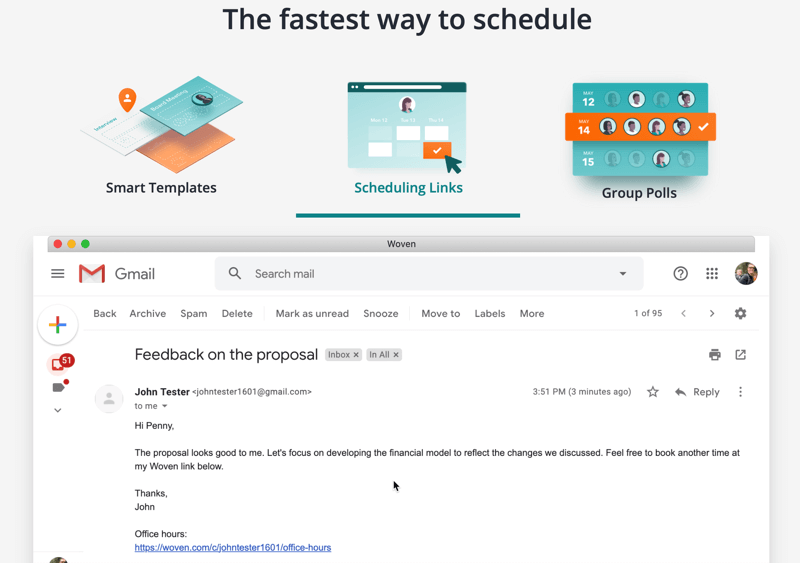
Woven lets you create different templates for each link type; for example, you can create one type of template for your podcast guests, another template for someone coming to record YouTube content, and other templates for different types of in-person or virtual meetings, with different links, a different setup, and different copy. It syncs with all different calendar types and will alert you to availability conflicts between calendars.
Woven is a web-based service that also has desktop apps for both Mac and Windows, an iOS app, with an Android app coming soon.
Right now it's in beta so it's completely free, but they plan to always have a free option. When they add their paid features, they're just going to add on some extra bells and whistles.
Woven can be found at woven.com.
Key Takeaways From This Episode:
- Find out more about Rick on his website.
- Follow Rick on Instagram.
- Listen to Rick's The Art of Online Business podcast.
- Get on the waitlist to take Rick's Foundations ads course.
- Explore the Woven app.
- Check out Social Media Marketing World 2020.
- Watch exclusive content and original videos from Social Media Examiner on YouTube.
- Watch our weekly Social Media Marketing Talk Show on Fridays at 10 AM Pacific on Crowdcast.
Help Us Spread the Word! Please let your Twitter followers know about this podcast. Simply click here now to post a tweet.
If you enjoyed this episode of the Social Media Marketing podcast, please head over to iTunes, leave a rating, write a review, and subscribe. And if you listen on Stitcher, please click here to rate and review this show.
What do you think? What different methods have you tried to optimize your Facebook and Instagram advertising? Please let us know in the comments below.
Attention Agency Owners, Brand Marketers, and Consultants

Introducing the Marketing Agency Show–our newest podcast designed to explore the struggles of agency marketers.
Join show host and agency owner, Brooke Sellas, as she interviews agency marketers and digs deep into their biggest challenges. Explore topics like navigating rough economic times, leveraging AI, service diversification, client acquisition, and much more.
Just pull up your favorite podcast app, search for Marketing Agency Show and start listening. Or click the button below for more information.

